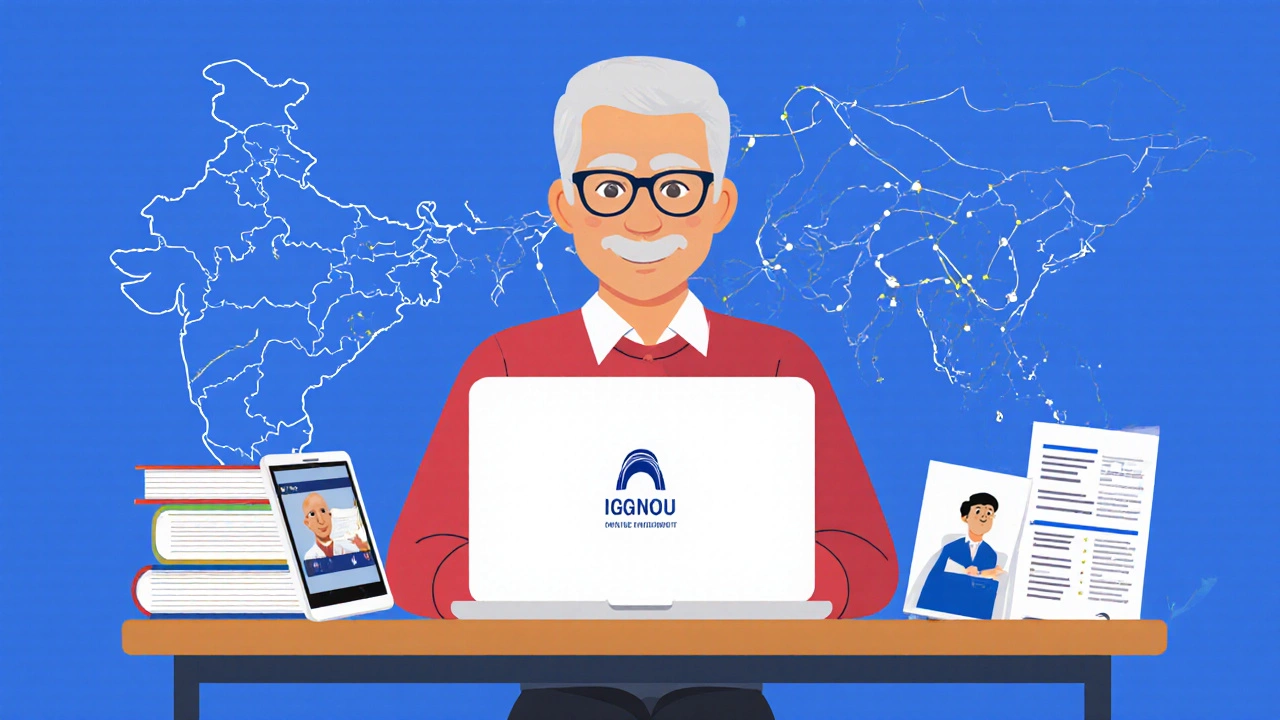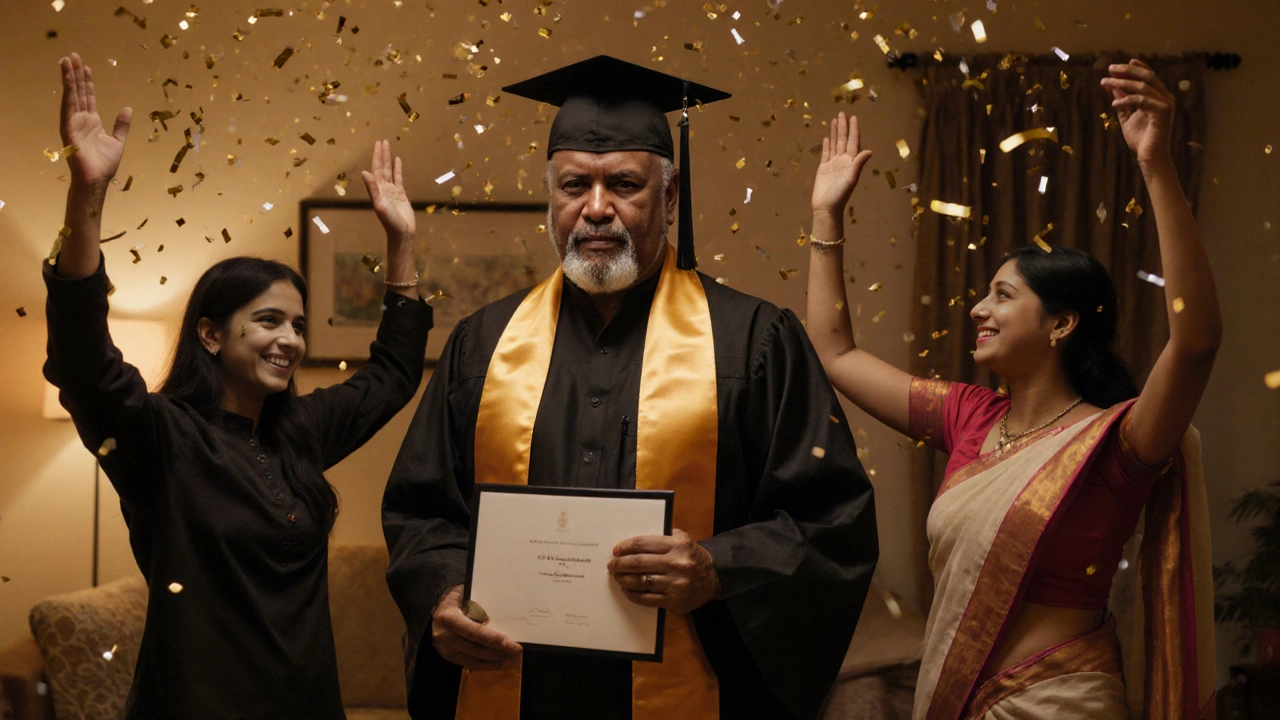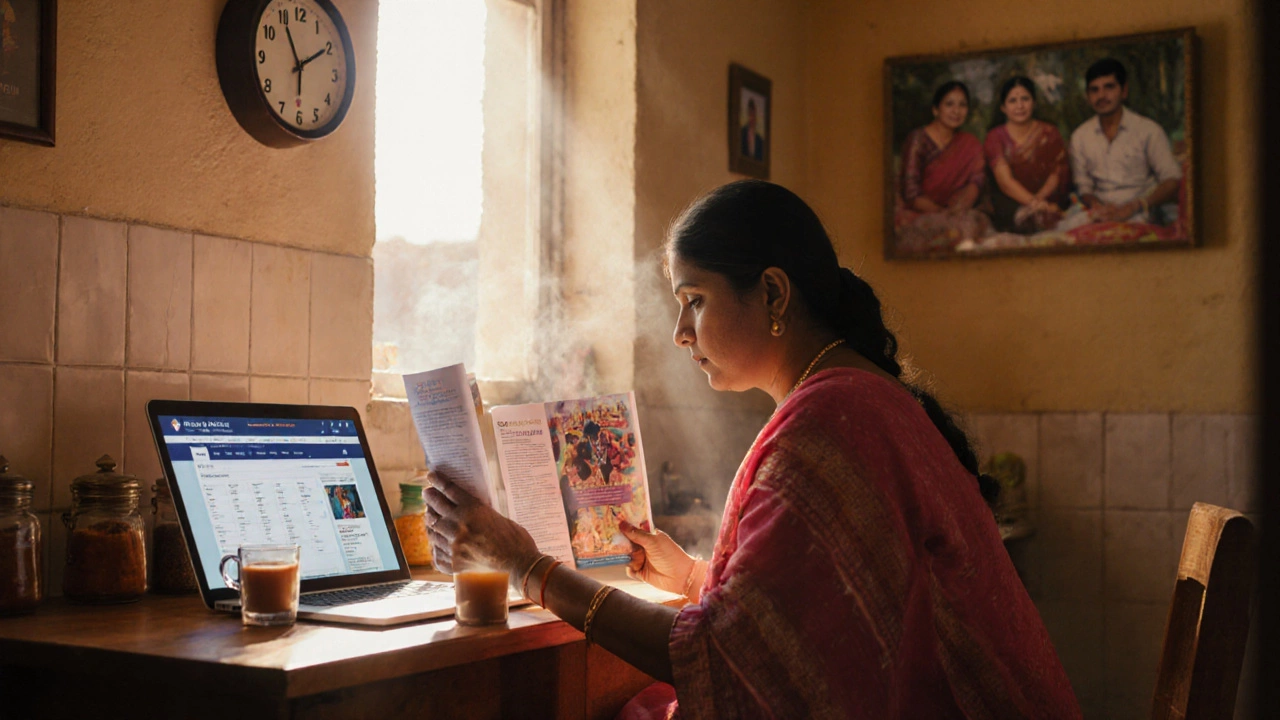Study Pathway Planner for Adults Over 40
Recommended Study Path
Wondering if you can hit the books after turning 40? Turns out, age isn’t a dead‑end for learning in India. Whether you crave a fresh degree, a vocational skill, or a quick online course, the landscape is packed with pathways that welcome mature learners. Below you’ll find a clear roadmap to help you decide what fits your life, budget, and goals.
Quick Takeaways
- Most Indian universities impose no upper age limit for undergraduate and postgraduate programmes.
- Open universities such as Indira Gandhi National Open University (IGNOU) offers flexible, distance‑learning degrees for adults.
- Vocational and skill‑development courses (e.g., electrician, digital marketing) often accept learners of any age and can be completed part‑time.
- Financial aid is available through the National Scholarship Portal and specific state schemes for mature students.
- Balancing study with work and family works best with a clear schedule, supportive peers, and technology‑enabled resources.
Understanding Age Policies in Indian Education
For most formal programmes, the University Grants Commission (UGC) does not set an upper age ceiling. The only common restriction appears in certain entrance exams that target school‑leavers, like the JEE or NEET, where a maximum age is stipulated for that year's intake. However, if you aim for a bachelor’s or master’s degree after 40, you can typically enrol directly, provided you meet the basic academic prerequisites (12th‑grade marks for undergrad, a relevant bachelor’s for postgrad).
Pathways Open to Learners Over 40
Below are the main routes you can explore, each with its own flexibility level and time commitment.
| Option | Typical Duration | Flexibility | Eligibility | Typical Cost (INR) |
|---|---|---|---|---|
| Full‑time degree (University) | 3‑4 years (UG) / 2 years (PG) | Low - fixed class schedule | 12th‑grade marks (UG) / relevant bachelor’s (PG) | 1,00,000‑4,00,000 |
| Part‑time degree (University) | 4‑6 years (UG) / 3 years (PG) | Medium - evening/weekend classes | Same as full‑time | 80,000‑3,00,000 |
| Distance/Open University (e.g., IGNOU) | 3‑5 years (UG) / 2‑3 years (PG) | High - study from home, self‑paced | 12th‑grade marks (UG) / relevant bachelor’s (PG) | 30,000‑90,000 |
| Online platforms (Coursera, edX, Udemy) | Weeks‑months per course | Very high - on‑demand videos | None for most MOOCs; some certificate tracks need prior knowledge | Free‑15,000 per certificate |
| Vocational / Skill Development (e.g., National Institute of Open Schooling) | 6‑12 months | Medium‑High - hybrid workshops + online modules | No formal age limit, basic literacy often enough | 5,000‑25,000 |

Open Universities: The Go‑To for Mature Learners
When schedule flexibility is non‑negotiable, open universities shine. Indira Gandhi National Open University (IGNOU) is India’s largest open‑learning institution, offering over 200 programmes from certificates to PhDs. You can register online, receive study material by post or digitally, and sit for exams at any of its many regional centers. The admission process typically asks for a scan of your 12th‑grade mark sheet (for UG) and a simple declaration of intent - no age proof required.
Another valuable option is the National Institute of Open Schooling (NIOS). While NIOS mainly provides secondary education, its ‘Open School’ program offers short‑term diploma courses in fields like computer applications and entrepreneurship, perfect for a career pivot.
Online Learning Platforms - Fast, Affordable, and Age‑Friendly
Platforms such as Coursera, edX, and Udemy host courses from global universities and industry experts. Most MOOC (Massive Open Online Course) content is free to audit; you pay only if you need a certified credential. This model eliminates any age gate entirely. Moreover, many Indian universities now partner with these platforms to offer accredited online degrees, so you can earn a formal qualification while staying at home.
Financial Support for Learners Over 40
Money worries shouldn’t stop you. The Indian government runs several scholarship schemes that are open‑ended on age. The National Scholarship Portal lists options like the “Madhya Pradesh Glass Ceiling Scholarship” for working‑class adults and the “Uttarakhand Skill Development Scholarship” for vocational trainees. Additionally, many banks provide education loans with flexible repayment terms that consider your post‑graduation earning potential rather than your age.
Private companies also offer tuition assistance for employees seeking upskilling. If you’re already employed, check your HR policies - a 30‑day study leave or partial fee reimbursement can make a big difference.

Balancing Study, Work, and Family
Successful adult learners adopt a firm routine. Here’s a practical 6‑step schedule you can tweak:
- Identify a fixed study block (e.g., 7‑9pm) and protect it like a meeting.
- Break lessons into 25‑minute “pomodoro” bursts; short breaks keep focus.
- Use a shared family calendar to inform relatives of your study times.
- Leverage technology: record lectures, use speech‑to‑text for notes, and set reminder apps.
- Schedule weekly check‑ins with a study buddy or mentor for accountability.
- Celebrate micro‑wins - a completed module, a good quiz score - to stay motivated.
Remember, it’s okay to start slow. The key is consistency, not speed.
Real‑World Success Stories
Take Ramesh, a 42‑year‑old electrician from Pune. He enrolled in IGNOU’s B.Com programme via evening correspondence, studied two hours each night, and secured a promotion to supervisory roles within a year. Or Priya, 45, who completed a data‑analytics nanodegree on Coursera while working part‑time; she now consults for local NGOs on impact measurement.
These anecdotes illustrate that age‑related stereotypes rarely hold up when you pair the right programme with disciplined habits.
Next Steps: Your Personal Action Plan
Ready to begin? Follow this quick checklist:
- Define your goal: degree, skill, or personal enrichment?
- Research programmes that match your goal - look for “no age limit” in admission criteria.
- Check eligibility: gather 12th‑grade certificates, bachelor’s transcripts, or work experience letters.
- Apply for scholarships or education loans through the National Scholarship Portal.
- Set a realistic weekly study schedule and stick to it.
- Join a peer group - forums, alumni clubs, or local study circles.
Take the first step today; the rest will follow.
Frequently Asked Questions
Is there an upper age limit for university admissions in India?
Generally, the University Grants Commission does not set an upper age limit for undergraduate or postgraduate programmes. Only a few entrance exams (like JEE or NEET) have age caps, which do not apply to most other courses.
Can I get a scholarship at 40?
Yes. The National Scholarship Portal lists several schemes open to adult learners, and many state governments run age‑unrestricted scholarships for vocational and higher‑education courses.
Which universities are most flexible for working adults?
Open universities like IGNOU and NIOS, as well as distance‑learning arms of major universities (e.g., Delhi University’s School of Open Learning), provide the highest flexibility. Many private institutions also offer weekend or evening classes.
How do I balance study with a full‑time job?
Create a fixed weekly study block, use short focused sessions (pomodoro technique), and leverage digital tools for note‑taking. Communicate your schedule with family and employers to set expectations.
Are online certificates valued by Indian employers?
Increasingly, yes. Many Indian companies recognize credentials from platforms like Coursera, edX, and accredited university‑partnered programs, especially in tech, data analytics, and digital marketing.
